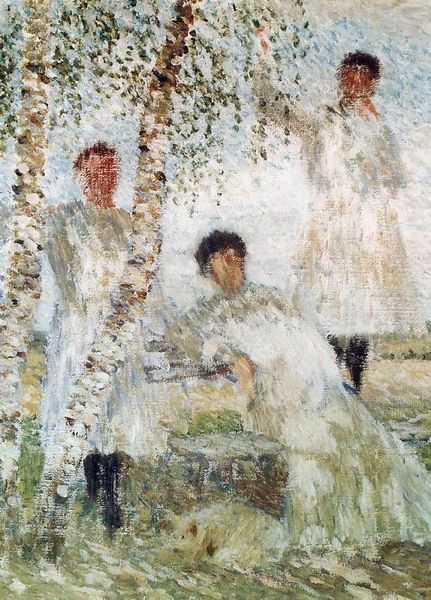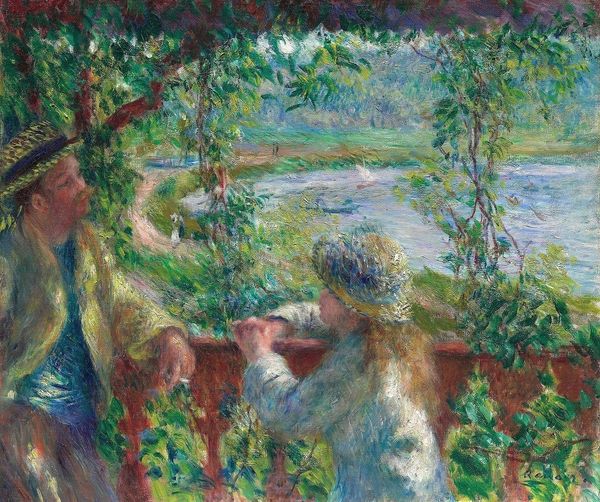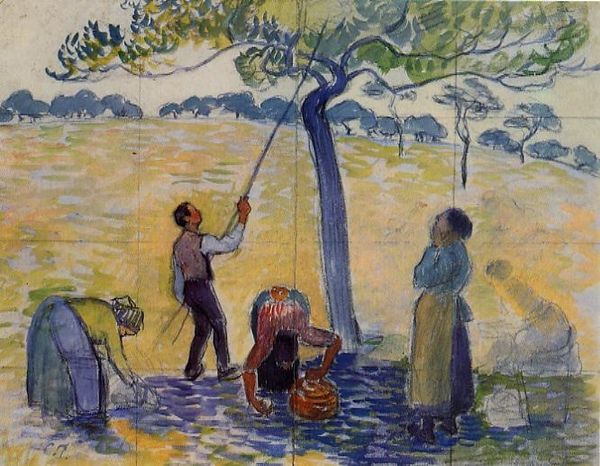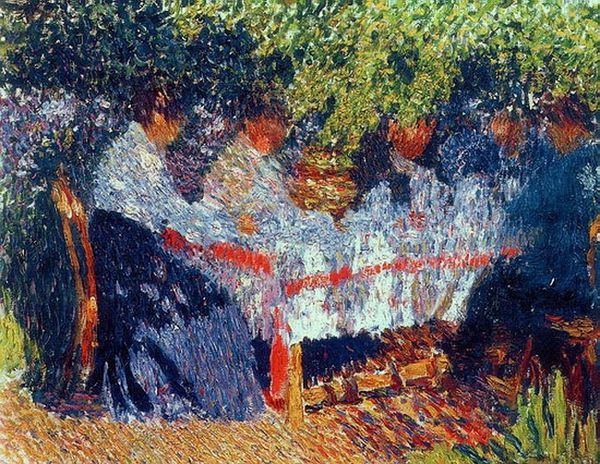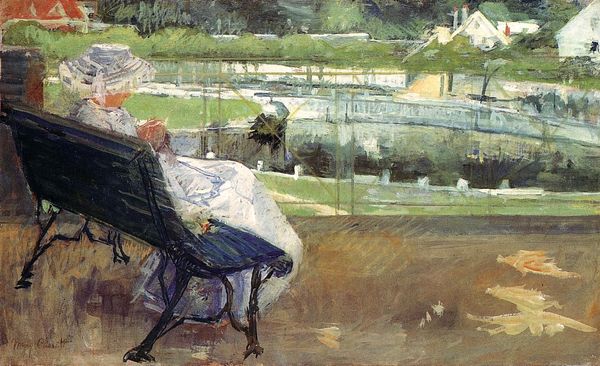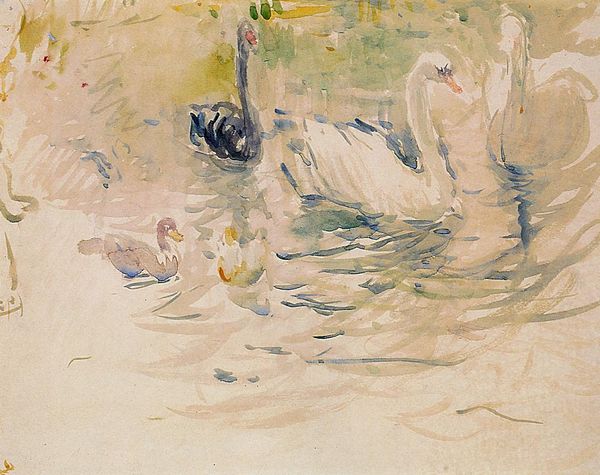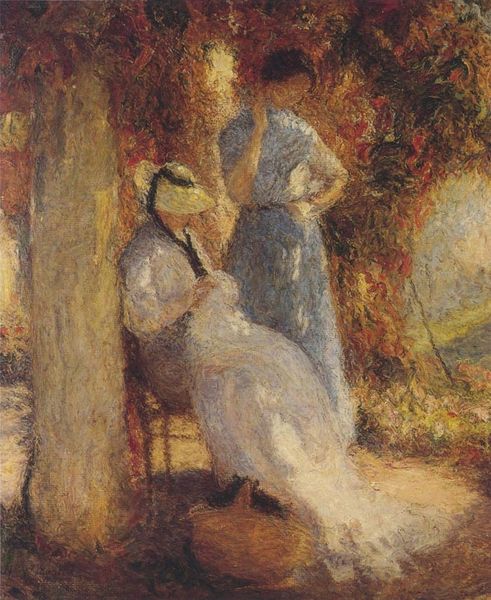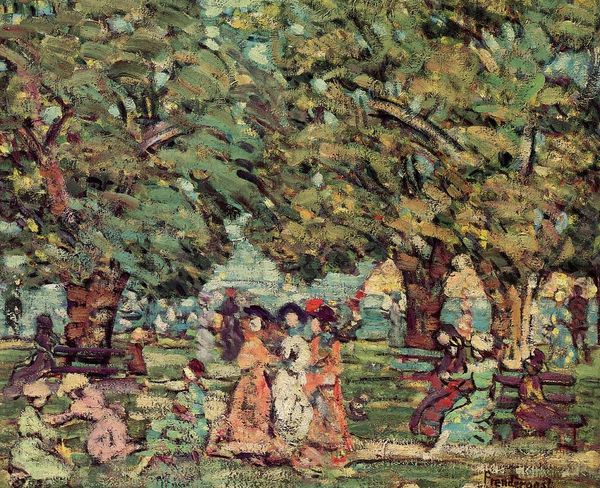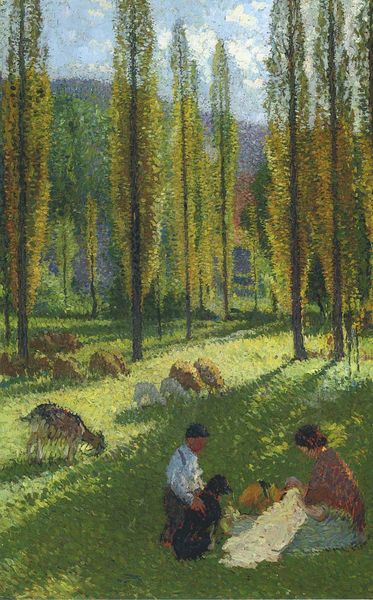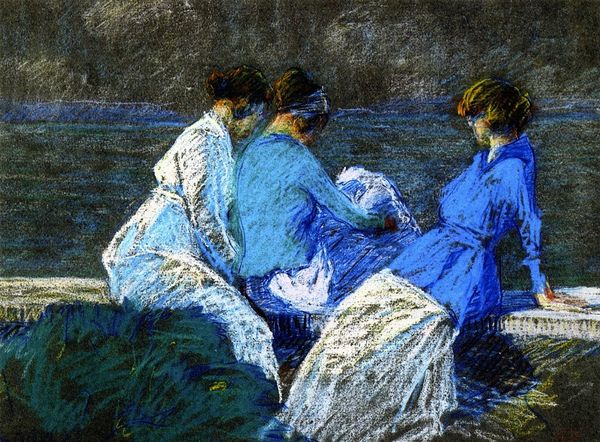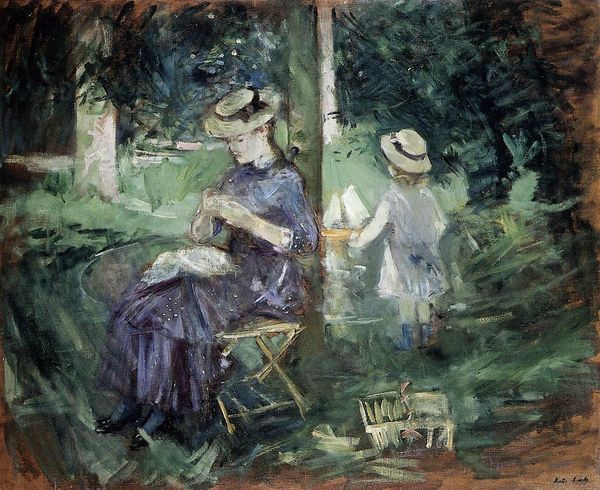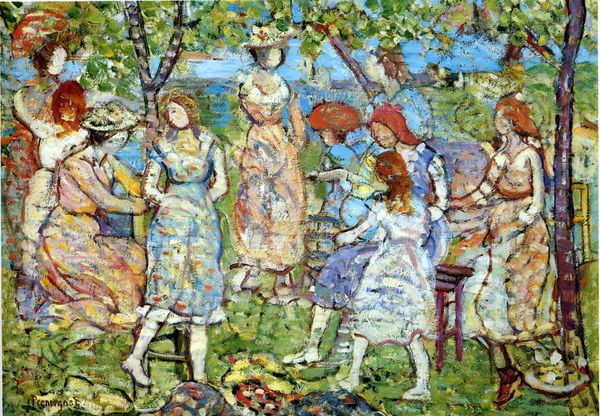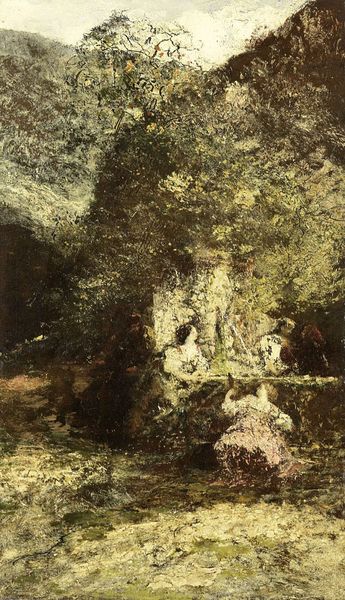
Copyright: Public domain US
Igor Grabar’s painting, Under Birches, captures a moment of youthful leisure in a Russian landscape. The early 20th century was a time of significant social and political change in Russia, with evolving ideas about national identity. Here, we see three young figures under the dappled shade of birch trees, their faces turned away or obscured. The birch tree is a quintessential symbol of Russia, often used in art and literature to evoke a sense of homeland. The children, though anonymous, seem to embody a connection to this land. There is a softness in the depiction of the children's clothing and bodies which creates a sense of intimacy. The artist plays with light and shadow, creating a sense of enclosure. Grabar himself navigated complex identities. Trained in law before dedicating himself to art, his work often reflects an intellectual engagement with questions of national and cultural belonging. The facelessness and lack of distinguishing features of the children may be indicative of the homogenization of children, and perhaps the artist is indicating that it is their shared location in society that binds them. "Under Birches" presents us with a moment of quiet contemplation, asking us to consider the relationship between identity, place, and memory.
Comments
No comments
Be the first to comment and join the conversation on the ultimate creative platform.
